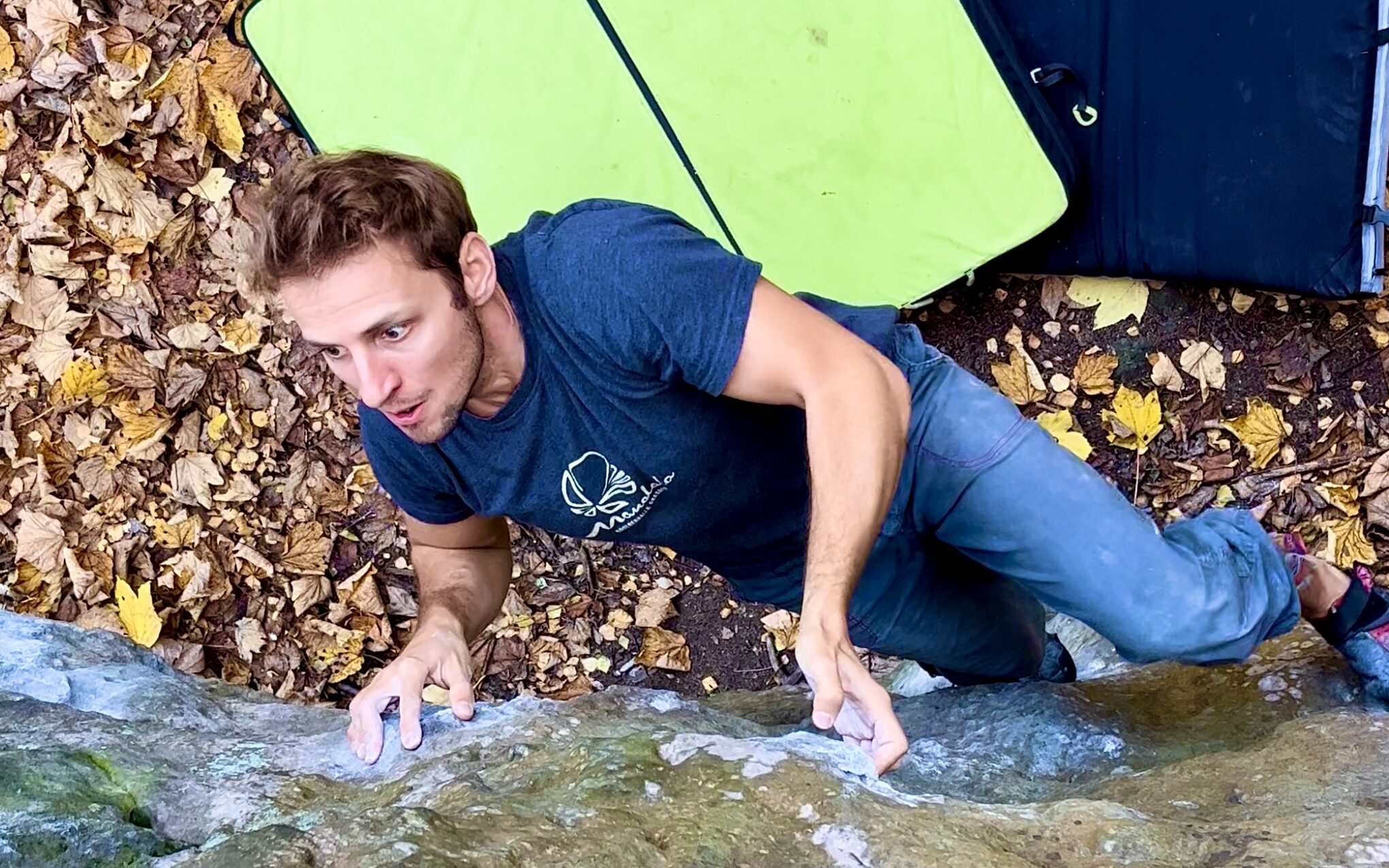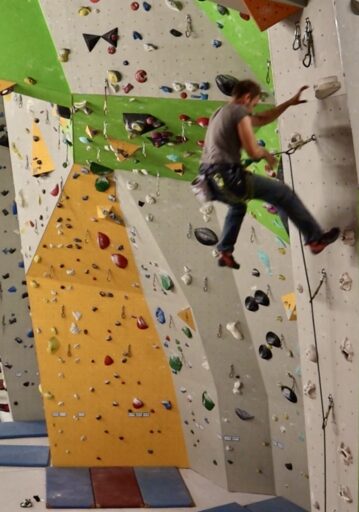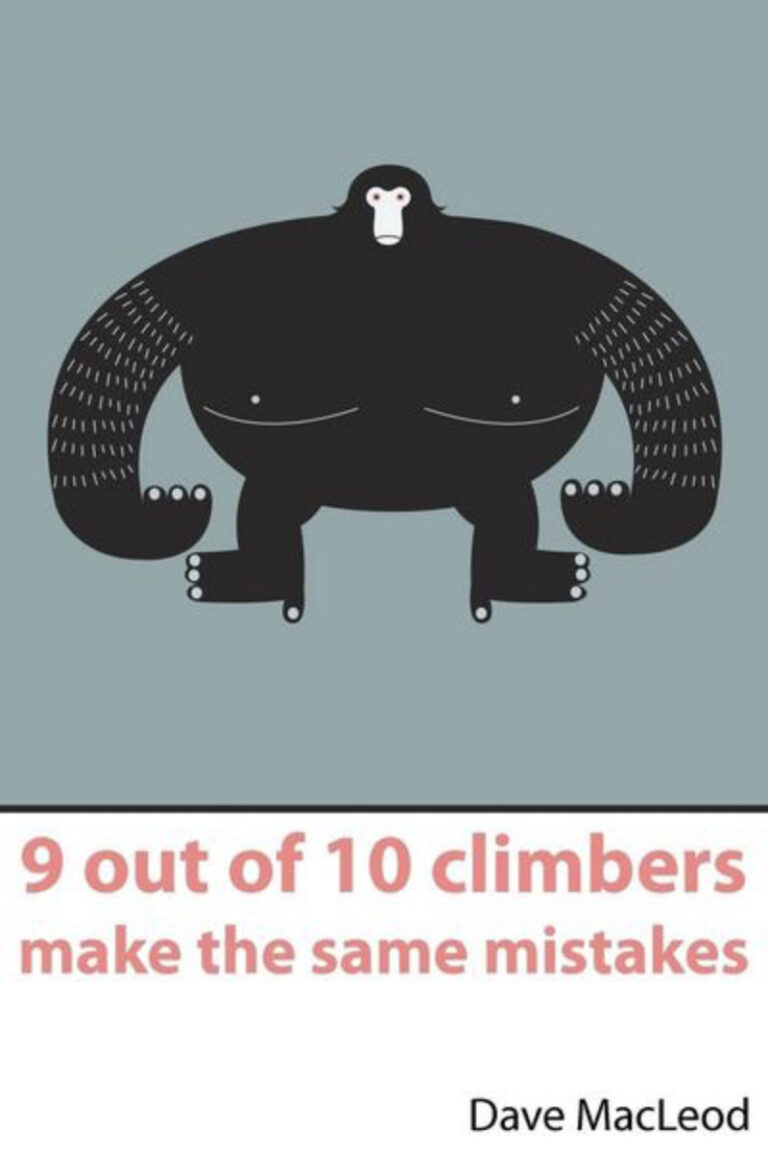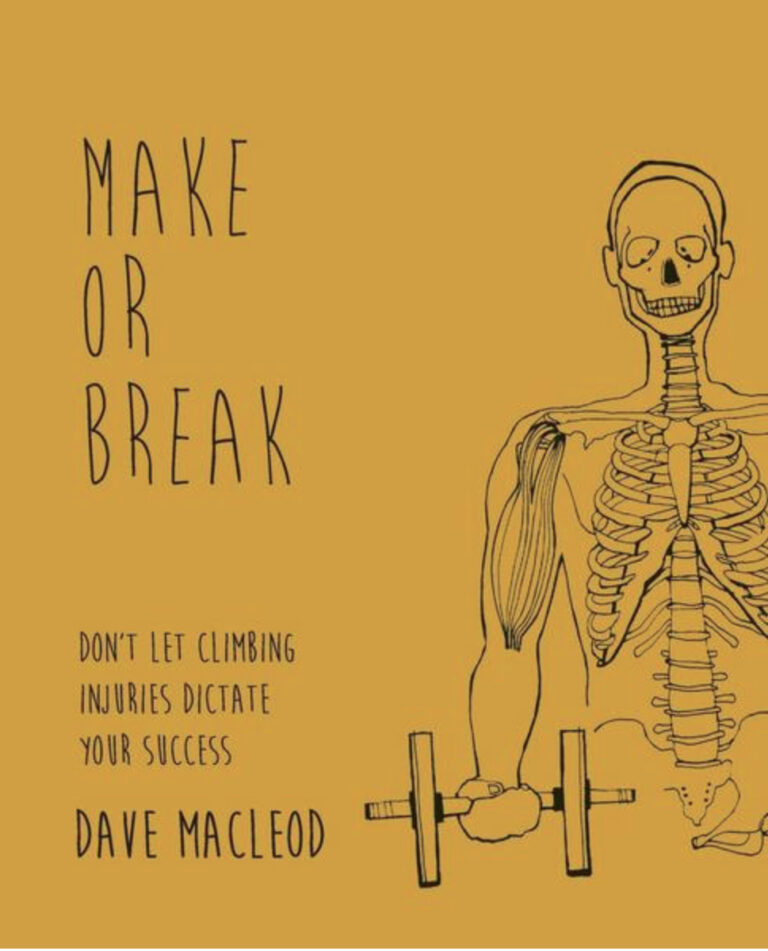
Being good in climbing is not just about being strong. Climbing has a unique character among sports, since it requires technical, physical and mental powers nearly equally. Training the first two is quite obvious: they require a huge amount of practice and strength training. Getting better in the mental game, however, is a lot more tricky. If you want to improve your mental strength, stick around for some fun techniques and four example training sessions at the end of this article!
This article is structured as follows:
Enjoy and share your thoughts in the comments!
Why mental training?
The goal of mental training is to change your mindset in a positive way, and thus to reduce depression and stress. It has been shown, that positive psychology can indeed have such an effect and thus, contribute to the well-being of individuals.1 Moreover, mental practice and a positive mindset can also have a significantly positive effect on your sport performance.2-4In other words, starting your climb believing that you can do it, enhances the chance that you indeed send the route. Interestingly, a positive effect on performance has been observed even in esports (video games).5
The effect of a variety of mental techniques on sport performance has been evaluated by a research group in Texas: Among techniques, such as task cohesion, pressure training, self-efficacy and many more, mindfulness seems to have the biggest positive effect.6 In order to achieve a maximum positive effect, however, one should not only focus on one, but rather on a combination of all these practices.
In this article I will mainly focus on techniques, which you can use to seek a better mindset both before and during climbing. In addition, I will give you a guideline how to overcome the most common mental blockade in climbing: the fear of falling. With this, you will have a better chance in sending your projects and furthermore in reducing stress in your life. Most of the techniques will seem obvious, but think about them for a moment and give them a conscious try.
You can always check out the cited literature for more details. If you have no access to some of the papers, here are some book recommendations.
Techniques for a better mindset
How good your mindest is, is mainly determined by your actions and thoughts. You can improve the quality of these by being conscious about your body and mind, respectively. You can find corresponding techniques in the following two sections.
Being conscious about your body
Smile
An interesting paradox from psychology is power-posing: Staying in a powerful pose for just a minute will make you more confident and risk tolerant, thus more „powerful“.7 This works also for other areas! It could sound ridiculous, but even such a small gesture as smiling has been shown to make you happier and to boost your performance during physical activity.8 So smile, roll your shoulders back, pretend that you are confident, and you will become, as a consequence, more confident.
Implement pre-climbing routines
Moreover, having consistent pre-climb routines/rituals can help you to minimise unnecessary thoughts in the middle of your route. Additionally, they will make you feel more comfortable.9 So find out what works best for you and stick to it. For me it is mostly warming-up, checking my gear, and try to visualise the route. Such pre-climb routines help me and could also help you to stay focused during climbing, rather than to think about whether you forgot something or where the next hold is.

Remark: The key in visualisation is to „feel“ the route as if you would perform it. The same way you can imagine what your muscles would do in case you would throw away something. In the picture on the left for example, I “use“ my muscles the same way I am planning to use them in a particular movement in the route. This will make the moves during my real ascent feel more familiar and make me thus more confident. Furthermore, by being good in visualisation, you will need less tries to complete a boulder, thus you can save skin and energy. Especially in competitions, this can make the difference between victory and defeat.
Relax
Techniques such as yoga, mindfulness-based meditation, or progressive relaxation can minimise stress and reduce tension & pressure in your body.10 This kind of meditation aims to train the mind to function in a non-judgemental mode. Yoga in addition can have impactful and positive health effects: It has been shown to both reduce stress (less cortisol & hearth-rate variability) and increase health-quality (reduced blood sugar, cholesterol).11 For me, already one conscious breath a day can make a difference.
Being conscious about your mind
Accept the outcome
Achieving and maintaining a positive mindset is not always easy, it often needs mental practice. One of the well-known examples, already described above, is mindfulness: Be aware of your thoughts and let them happen.10 Sometimes this means getting out of your comfort zone: Regardless of whether you think a move for you would be impossible, not giving it a try will never lead to success. Try to accept the outcome as an unknown, concentrate on here and now, and make the best out of the moment.
Stick to positive thoughts
In addition, you can also try to purposefully steer your thoughts: If you think you cannot do something and get frustrated, remember that nothing is impossible, at most rather challenging. Try to focus your thoughts on past successes rather than failures. Interestingly, asking yourself about „why“ your last successful performance turned out to be successful will help you to develop more self-esteem.12 So believe in your skills and strengths and grow more confident.
Especially in the beginning, steering your thoughts in the right direction can be hard. Documenting your everyday emotional state, progress, and eventual distractions can help you to find certain patterns. With this you can find triggers, that help you become more positive & and fine-tune your mental training.
Focus
If there is too much to take in, you can always try to narrow your attention to parts of the bigger picture. If for example the route is too hard, you can try focus your attention on one individual move, or to break it down into sequences and focus on its individual parts. Similarly, if you want to get better in a particular climbing style, you can always incorporate specific drill sessions into your climbing.

It is not a competition
Finally, don’t forget that there is a difference between competing, having a training session, and just having fun while bouldering/climbing. Regardless of you going to competitions or not, most of your time you are not competing. So try to let go and don‘t get obsessed with your self-image: You do not need to perform constantly at your best! Feeling the urge for this can obviously lead to intense pressure and anxiety, hence, to a worse performance.6 So stay positive and don‘t push yourself to your limits just due to social pressure or due to the urge to perform at your best.
Be motivating

Last but not least, positive emotions do not always need to be intrinsic. Gathering positive people around you will affect your thoughts and actions in a positive way.13 This works also vice versa, so do not forget how motivating it can be for your friends if you have a positive and mindful mindset.
Mental blocks: Fear of falling
One of the most common mental blocks in climbing is the fear of falling. Actually, it is not the fall itself we fear, but the unknown: Uncertainty associated with the process of falling and the outcome of it. Unknown things can cause the mind to imagine a variety of, often unreasonable, outcomes. Thus, the goal would be to rule out these unknown variables, one by one.
Everybody is different. So, unless you are Alex Honnold, (the climber from the movie Free Solo) or a honey badger, you will probably have some fears. Depending on how far advanced your fear of falling is, you will need more or less practice. Assuming you have no experience in falling, you can start by the basic techniques described below. Step by step, you can work your way forward to more and more advanced techniques. Try not to rush yourself: Building up some resistance against fear of falling takes a huge amount of time.
Basic techniques | Sport climbing indoors
Get rid of unreasonable fears
First of all, one should distinguish between unreasonable and reasonable fears. The latter are of great importance, they keep you alive in the end of the day. The goal is to deal with the unreasonable ones. If you are a beginner, you will probably have some. Try to make a list and write them down. Next, try to use logical and reasonable arguments to conquer or actions to mitigate them. While doing so, try to stay realistic and focus on the probable outcome and not some unrealistic, worst-case scenario you would imagine in a horror movie. In the beginning this can be hard, since you lack experience. The next step would be thus to gain some experience, practice and update your list on a regular basis.

Gain some experience
Falling feels generally scary in the beginning, because your gut instincts cannot estimate the risk. You can overcome this by gaining positive experience through intentional falls. These allow you to build up a resistance against unreasonable fears of falling during climbing. In my opinion, taking all other unknowns out of the equation can help you progress faster. Thus, the best practice ground could be an indoor gym, where a lot of unknown variables are already ruled out.
You should start with small, (5-10) cm intentional falls and get incrementally to the point where you fall about (2-3) meters. This is more or less the case, when the protection is just below your feet. Stay at this level for a while until you don‘t care about falling any more: This should build your foundation. By the way, to feel confident at this level takes time: It could potentially mean hundreds of falls.
After you feel confident at this level and built thus up your foundation, you could take the next step and move on to even bigger falls or introduce some other unknown variables into the equation. But more to this in the next section. Before you move on: Don’t rush it! The progress of building up resistance is reversible.14 If you don’t take falls for months for example, it could take several weeks to gain confidence again. Moreover, an unpleasant fall could set you back at this process for an even longer time. Hence, having the right falling technique is crucial to have a positive experience: Check it out below if you are interested.
Intentional falls described above can be practiced best by drill sessions. If you like climbing, I could imagine you don’t want to do such extra sessions for ever. Thus, after you feel comfortable at the level of falling (2-3) meters, just build in a few routine falls into your normal climbing sessions. About 5 to 20 falls a session should serve as a rule of thumb.
Intermediate techniques | Sport climbing outdoors
If you want to move on to falling outside, at the crags, you should, again, introduce one unknown at a time. Start, thus, by well protected sport climbing routes. Your new unknown variable: The holds you don’t see. Not knowing where exactly the next hold is, or how it is going to feel could potentially stress you out. The key in such situations is (1) mindfulness and (2) practice:
- Ultimately, you need to accept that you could potentially fall, but it should be fine. This is why the previous steps leading to feeling confident while falling are important. Otherwise you would need to worry about multiple unknown variables.
- A good pre-practice you can do can take place indoors: First of all, search for routes, where at a certain point you cannot see the next hold entirely, and go for it. Next, get used to the situation, where grabbing the next coloured hold from an other route, or a quickdraw is not an option. The situation will come during a climb outdoors, where this will not be possible. You should be prepared for that. Hence, try to avoid doing this in the first place, regardless the temptation.
Advanced techniques | Trad climbing
Moving on from well-protected sport routes to trad climbing is quite a big step for a lot of climbers. The new unknown variable, the uncertainty about your self-placed protection is of course more dangerous if not practiced enough. You will, again, need a high volume of practice regarding intentional falls into your self-placed protection. Make your own conscious decision, weather you want to try this unique kind of climbing or not.
At this point, a lot of previously unknown variables will come together. If you followed the steps above, you should have already mastered them all, now it comes to putting the pieces together. Additionally, this is the moment, where the general mental techniques from above, such as mindfulness, having a good pre-climb ritual and being good in visualisation, will play a major role:
Visualisation will help you to recognise potentially dangerous falls in the route and to make fallback plans even before you would leave the ground. Such a fallback scenario should lead you to a safe point and could be a down-climb or an easier route nearby. Don’t forget to inform your belayer about your plan B in advance. With this, you can minimise unknown situations during your climb. Additionally, it will help you to stay focused and relaxed by allowing you to choose your plan B anytime you decide to. Finally, when it comes to dangerous situations: Always know your limits and never go past them.
Example sessions
The idea of making a plan about how to apply all this techniques is quite overwhelming? Start by trying out the following example sessions and find your own way with time. You can also find videos below about me trying them out in multiple training sessions. One of the techniques above, you should always try to use: Think about how motivating it is to have positive people around you & give something back by being that person.
BODY
Mindfulness
Try to reduce stress during this session by being mindful. Try to focus your thoughts towards your body and mind, for example by a conscious breath, a bit of stretching or yoga. Get rid of your thoughts & stress of the day and tune your mindset fully to climbing.
MIND
Positive self-talk
Try to document your emotional state for at least a week and find out what lifts your mood. Concentrate on the latter just before and during this session and do not forget to smile & be happy.
DRILL
Focus
Dedicate 30 minutes of this session to a drill exercise and forget about your performance. Focus, thereby, mainly on one particular technique, such as foot positioning, training a particular grip type (slopers, crimps), or whatever comes to your mind.
BODY
Warm-Up
A proper warm-up can help you to stay away from injuries. Optimise it to activate all important muscle groups, but do not exhaust them.
MIND
Visualise
Improve your visualisation skill: Use it before every ascent in this session. Try not just to see, but also to “feel” how you would use your corresponding muscles during the route.
DRILL
Break it down
Break down a hard climb / boulder into sequences and focus on them individually. This can enormously help to concentrate your focus and to save energy.
BODY
Antagonist training
Train your antagonist muscles during your warm-up during this session. Only training the muscle groups used whilst climbing can lead to unilateral workload and thus injury.
MIND
Fall training
Include some fall training into your session depending on your confidence level. Keep the above described falling technique in mind and rule out unknown variables one by one.
DRILL
Try out something new
It is drill time again: If you are stuck on a problem and nothing seems to work, try out multiple new ways you normally would not and widen your repertoire.
BODY
Pre-climbing ritual
Having a consistent pre-climbing ritual can help you to achieve a flow state and thus, reduce stress. Think of a sequence you perform before a climb and stick to it. (e.g.: warm-up, visualise, check gear, put on shoes)
MIND
Accept the outcome
Visualise the route and rule out worst case scenarios & thus unreasonable fears. If the route is not dangerous, give it a try. Think of things that make you confident and rule out bad thoughts. Try not to worry about the outcome: Regardless of whether you send the route or not, you are not in danger.
DRILL
Stress reduction
Focus on problem solving, rather than performing. You cannot constantly perform at your best. Reduce stress during climbing by remembering to focus, breath, relax your muscles, accept the outcome & smile.
Bibliography
- Carr, Alan, et al. “Effectiveness of positive psychology interventions: a systematic review and meta-analysis.” The Journal of Positive Psychology 16.6 (2021): 749-769. https://doi.org/10.1080/17439760.2020.1818807
- Mann, Amanendra, and Bani Narula. “Positive psychology in sports: An overview.” International Journal of Social Science 6.2 (2017): 153-158.
- Driskell, J. E., Copper, C., & Moran, A. „Does mental practice enhance performance?“ Journal of Applied Psychology, (1994). 79(4), 481–492. https://doi.org/10.1037/0021-9010.79.4.481
- Vast, Robyn Louise, Robyn Louise Young, and Patrick Robert Thomas. “Emotions in sport: Perceived effects on attention, concentration, and performance.” Australian Psychologist 45.2 (2010): 132-140. https://doi.org/10.1080/00050060903261538
- Behnke, Maciej, James J. Gross, and Lukasz D. Kaczmarek. “The role of emotions in esports performance.” Emotion (2020).
- Lochbaum, Marc, et al. “Sport psychology and performance meta-analyses: A systematic review of the literature.” PloS one17.2 (2022): e0263408. https://doi.org/10.1371/journal.pone.0263408
- Carney, Dana R., Amy JC Cuddy, and Andy J. Yap. “Power posing: Brief nonverbal displays affect neuroendocrine levels and risk tolerance.” Psychological science 21.10 (2010): 1363-1368. https://doi.org/10.1177%2F0956797610383437
- Brick, Noel E., Megan J. McElhinney, and Richard S. Metcalfe. “The effects of facial expression and relaxation cues on movement economy, physiological, and perceptual responses during running.” Psychology of Sport and Exercise 34 (2018): 20-28. https://doi.org/10.1016/j.psychsport.2017.09.009
- McCann, Sean. “Routines, rituals, and performing under pressure.” Olympic Coach 20 (2008): 14-15.
- Praissman, Sharon. “Mindfulness‐based stress reduction: A literature review and clinician’s guide.” Journal of the American Academy of Nurse Practitioners 20.4 (2008): 212-216. https://doi.org/10.1111/j.1745-7599.2008.00306.x
- Pascoe, Michaela C., David R. Thompson, and Chantal F. Ski. “Yoga, mindfulness-based stress reduction and stress-related physiological measures: A meta-analysis.” Psychoneuroendocrinology 86 (2017): 152-168. https://doi.org/10.1016/j.psyneuen.2017.08.008
- Van Lier, Jens, Michelle L. Moulds, and Filip Raes. “Abstract “why” thoughts about success lead to greater positive generalization in sport participants.” Frontiers in Psychology 6 (2015): 1783. https://doi.org/10.3389/fpsyg.2015.01783
- Parkinson, Brian. “Emotions are social.” British journal of psychology 87.4 (1996): 663-683.
- Vervliet, Bram, Michelle G. Craske, and Dirk Hermans. “Fear extinction and relapse: state of the art.” Annual review of clinical psychology 9.1 (2013): 215-248. https://doi.org/10.1146/annurev-clinpsy-050212-185542

My name is Vincent and I want to share my climbing & general outdoor experience with you. If you have any comments or questions do not hesitate to contact me!






5 Replies to “Mental Training for Climbing Better”